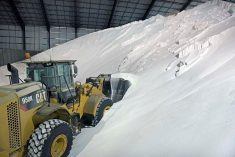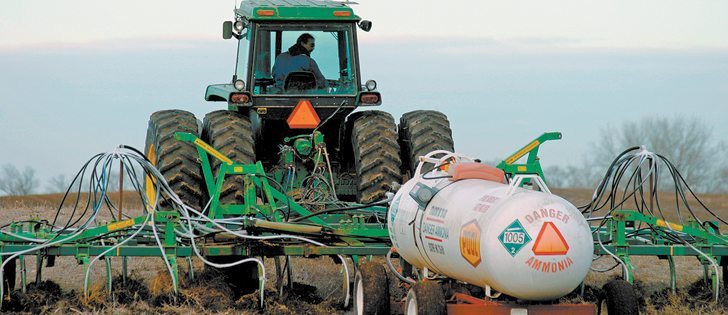Several factors, including falling input costs, should encourage American farmers to increase corn plantings this spring, according to the U.S. Department of Agriculture.
But actual seeding doesn’t begin for almost two months so weather and other issues could alter the seeding mindset between now and then.
Crop prices fell following the USDA Outlook Conference where the department’s economists on Feb.23 forecast corn plantings at 91 million acres, up 2.7 percent compared to last year. They see soybeans acres at 87.5 million, steady with last year.
Read Also

USDA’s August corn yield estimates are bearish
The yield estimates for wheat and soybeans were neutral to bullish, but these were largely a sideshow when compared with corn.
The soybean-corn price ratio favours corn and end-of-year stocks in the U.S. and internationally are fairly tight.
Another factor is the falling price of fertilizer, lowering production costs and the financial risk of growing corn.
This time last year, fertilizer prices were soaring as markets scrambled to adjust to Russia’s invasion of Ukraine.
Russia is a major fertilizer exporter and its shipments were threatened by economic sanctions. Grain prices also rose, giving fertilizer marketers cover for price increases.
The invasion also caused natural gas prices to soar, raising costs for producers of nitrogen fertilizers and forcing some European plants to temporarily close.
But now, according to the DTN Fertilizer Index, urea’s price in Iowa is down about 19 percent from the same point last year, UAN 32 percent is down about seven percent, MAP 11-52-00 is down about six percent and potash is down 15 percent.
Global fertilizer supply is not as tight as feared because Russia has been able to ship. Grain prices have also fallen, making farmers reluctant to buy inputs if they are too expensive.
And the price of natural gas, a key raw material for nitrogen fertilizer, has plummeted.
With access to Russian gas cut off last year, the price of the fuel soared as Europeans searched for alternative sources.
The spot price on the New York Mercantile Exchange NYMEX peaked around US$9.50 per mmBTU (metric million btu) last summer and European prices were far higher. The North American price moderated to a still-high $6-$7 range in the fall.
But then in late December the price collapsed. Europe was able to find enough gas to meet its needs so long as it instituted conservation measures. Also, much of the continent enjoyed a much warmer than normal winter as did the densely populated U.S. East Coast.
The NYMEX March natural gas price dipped below $2 on Feb. 22, the lowest since September 2020, before halting the slide late last week as winter storms swept across much of the U.S. increasing heating demand.
Will fertilizer prices continue to fall? It’s hard to say.
The war in Ukraine is expected to heat up in coming weeks with Russia planning offensives and Ukraine counter offensives. There is always a danger that agreements that keep grain and fertilizer moving out of the Black Sea could fall apart.
North American demand for fertilizer will tick higher as farmers top up supplies for the seeding campaign, which could put upward pressure on prices.
And natural gas prices could bottom out and start a modest recovery as foreign buyers take advantage of the current low price to refill storage.
But I would be surprised if we see the sort of price increases we saw in the spring of last year.
As I noted earlier, corn planting in the U.S. is expected to rise because the soybean-corn futures price ratio currently sits at about 2.32-to-one, a lower level than at the same time in the previous five years.
The ratio has to climb to 2.4-to-one or higher to encourage soybean planting.
Could soybean prices rise relative to corn prices in the coming months?
South America’s weather still has influence.
There was a freak summer frost in Argentina Feb. 18 that damaged soybeans and corn, which were already stressed by the worst drought in 60 years.
The Buenos Aires grain exchange last week slashed its soybean production forecast to 33.5 million tonnes, down from 38 million last month. It cut the corn crop to 41 million tonnes from 44.5 million.
Both forecasts are substantially lower than the current USDA forecasts.
The news provided a little market support early last week but was drowned out later by the negative aspects of the USDA Outlook conference forecasts .
Also, strong shipments from Brazil as it harvests its record large soybean crop offset the news from Argentina.
But something to watch is the effect of heavy rain in large parts of Brazil that is delaying soy harvest and the planting of the big second corn crop.
The ideal planting window is fast closing and late-planted corn could end up with problems with frost before the second crop is harvested in June.

















